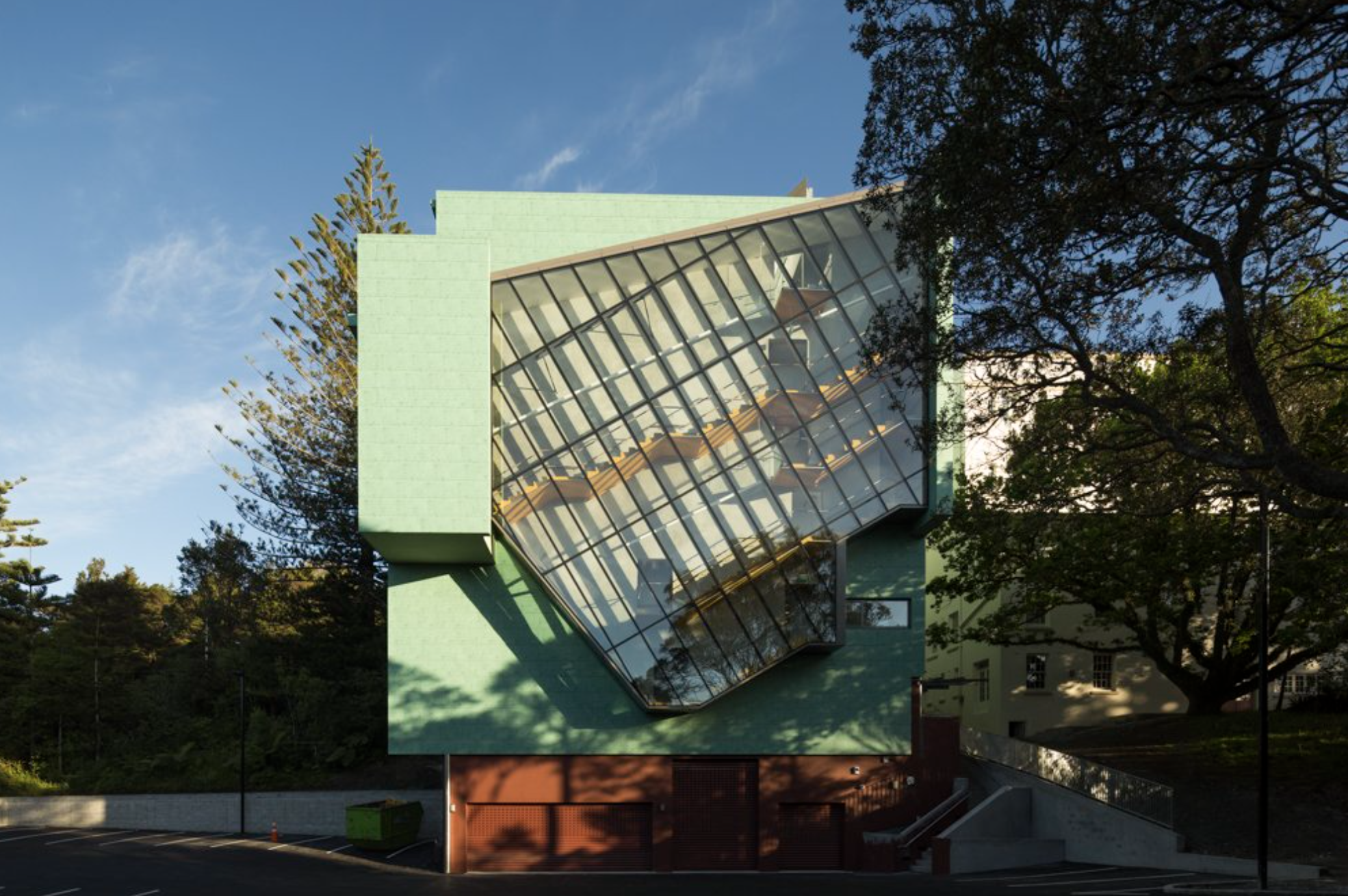Tāmaki Makaurau Day Three: Waitākere
Te Uru Waitākere Contemporary Gallery seen from the south-east. Photo: Sam Hartnett.
Tāmaki Makaurau Auckland Art Itinerary Day Three: Waitākere
For day three, our Tāmaki Makaurau Auckland itinerary suggests an escape from the city to discover three important art spaces marking the city-edge and historical gateway to the Waitākere Ranges or Te Wao Nui o Tiriwa a native reserve spanning approximately 25 kilometres from the charming village of Titirangi to the exquisite western coastline.
Lopdell House is an arts centre which first served as a hotel, opening in 1930, housing the offices of Te Uru and the McCahon House, as well as community art space The Upstairs Art Gallery, all on the second floor. Accessible via the top floor of Lopdell House is a rooftop offering spectacular views across treetops out to the Manukau Harbour, which, on special occasions Te Uru makes use of for performances and events.
Te Uru Waitākere Contemporary Gallery is an impressive modern addition to Lopdell House, the closest thing Aotearoa has to Paris’ Pompidou. The transformational architectural addition opened in 2014, solidifying Titirangi as a cultural hub. The public gallery hosts several contemporary and historical exhibitions simultaneously across several galleries and floors. Each gallery is linked by two internal staircases and lifts, and sitting on a ridgeline, all windows facing southeast frame views of flora, their pompidou-esque staircase connecting the interior to the surrounding nature.
Where Lopdell House meets Te Uru Waitākere Contemporary Gallery. Photo: Sam Hartnett.
Te Uru is a non-collecting institution, meaning all their exhibition programmes are temporary. Recommendations as of May 4, 2025 include Maungarongo Te Kawa’s exhibition of exuberant quilts Kokonga Ngākau in the downstairs learning center gallery, and the retrospective of work by Pauline Kahurangi Yearbury (b.1928 d.1977 Ngāpuhi). Yearbury was the first Māori person to train in fine arts, graduating in 1949 from Elam and going on to become one of the first Māori artists to introduce Māori cultural narratives into contemporary art, best known for her wooden panels featuring figures from Māori whakapapa (genealogy).
McCahon House and Residency, only open weekends from 1-4pm, can be found a 25 minute walk or short drive down the hill. The humble 1950s home of Colin McCahon, a significant contributor to Aotearoa New Zealand's modern art history, is surrounded by native bush and is now a museum with a modern adjoining artist residency named Parehuia, which has hosted dozens of leading local and international artists since 2006, with Judy Millar being the first resident.
For the afternoon we suggest heading further afield to the precious beach of Piha, which offers breathtaking sunsets. One can also explore one of several hikes in the area including to the Kitekite Falls, or the Mercer Bay Loop Walk. Art can also be found at the West Coast Gallery – Piha showcases local art and crafts, while for dining one can find a classic fish and chips at the Surf Life Saving Club, the Bowling Club, for finer fare that will still accept beach shoes, we can suggest booking ahead for Aryeh, from where you can see the sun set behind Te Piha, also known as Lion Rock a 16-million-year-old volcanic neck which separates the beach at the mouth of the river.
Note that public transport in this tāone urban area will take you as far as Te Uru Contemporary Art Gallery, from where you can walk to the McCahon House, but for ease and navigating to the highly recommended beach of Piha and local waterfalls, a car is ideal.
Read more:
Tāmaki Makaurau Day One: City Centre
Tāmaki Makaurau Day Two: Karangahape
Tāmaki Makaurau Art Itinerary by Art Guides World on Google Maps


